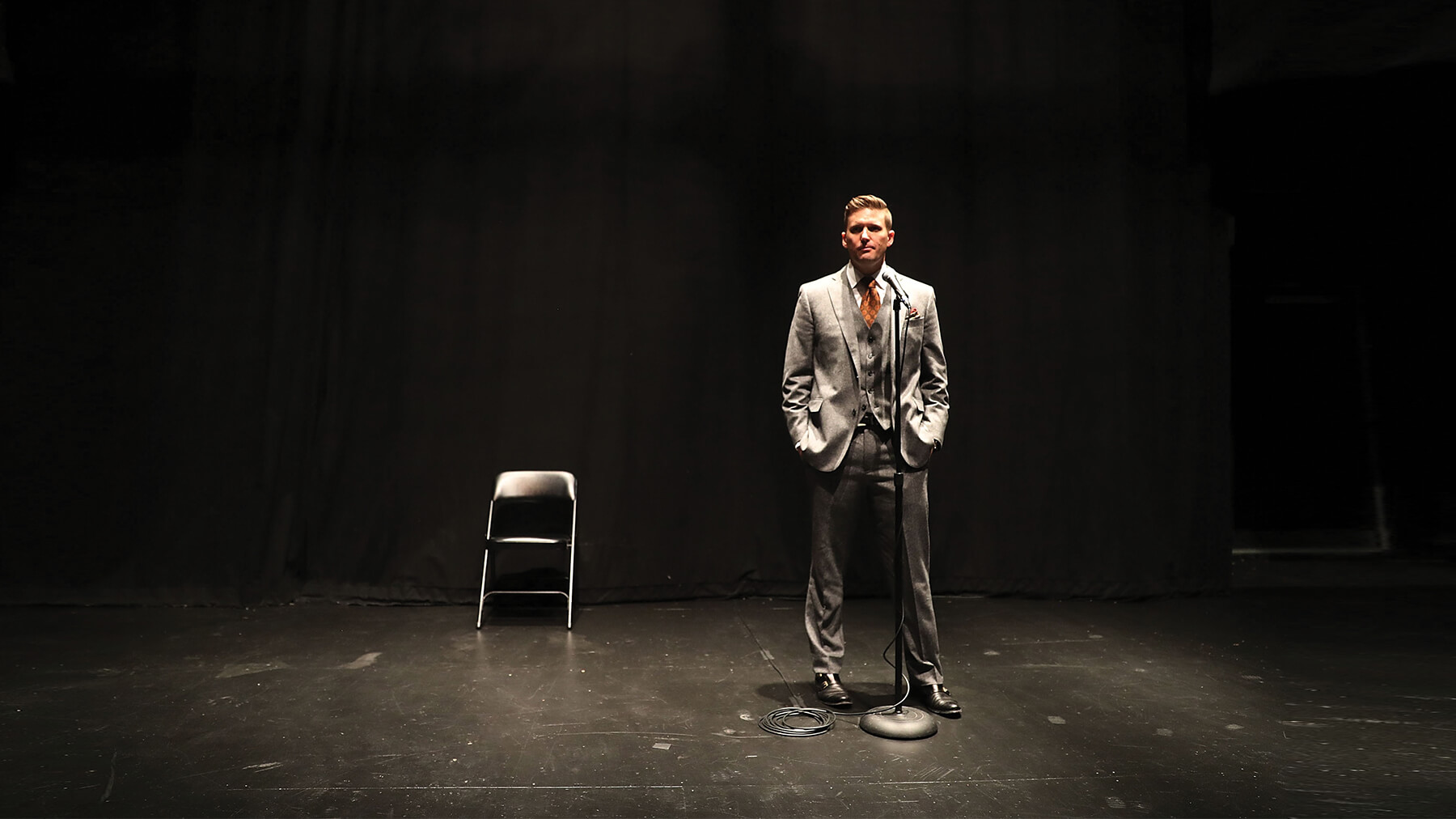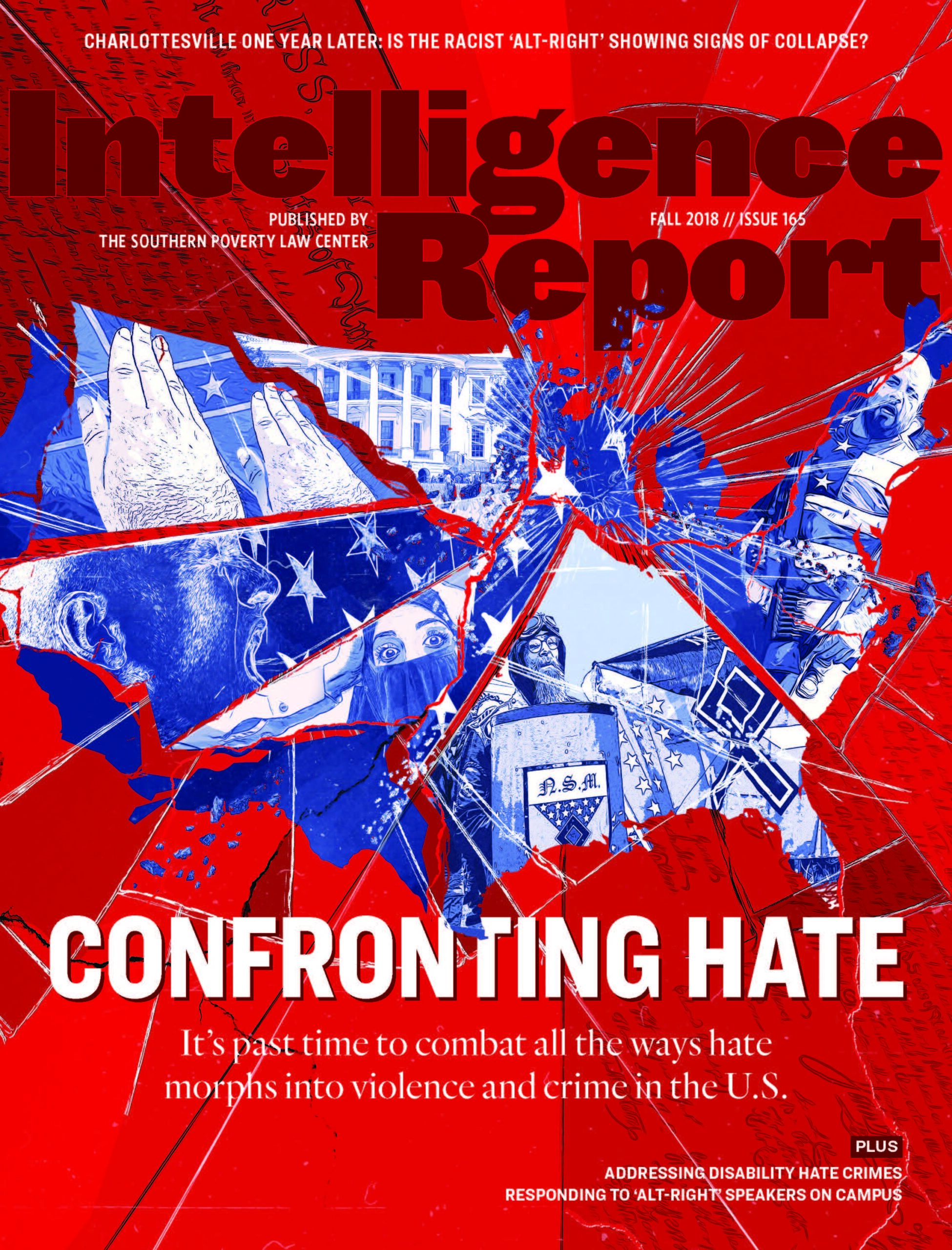Richard Spencer took universities, protesters by storm; they adjusted and brought his speaking tour to an end.
The white nationalists marched across the campus in crisp, white dress shirts and khakis or decked out in all black Dickies and boots, headed under an overcast sky toward protesters clad in a variety of outfits and masks, carrying signs.
Nearby, police in riot gear watched warily and waited for the conflict to start.
The scene, as it played out March 5 at Michigan State University in East Lansing, looked a lot like what happened publicly at other colleges when racist “alt-right” front man Richard Spencer chose to speak on their campus.
It was another chapter in the alt-right campus playbook, which brought the potential for violence, protests and an internal scramble by university officials to create other events or minimize student exposure to Spencer and his followers when they descend upon a school.
But universities are making adjustments in how they respond to the requests, much to the chagrin of Spencer and other alt-right figures, who have started to scale back school talks.
Long-time target
College campuses have been a target for decades among white nationalists, racists and white supremacists, because the schools are seen as liberal bastions that either need to be exposed to right-wing ideologies or called out for their political leanings.
Former Ku Klux Klan leader David Duke got his start at Free Speech Alley at Louisiana State University in the late 1960s and early 1970s, which he used as a platform to try and start a political career.
It’s also where Duke first came out as a Nazi.
During a Free Speech Alley session in 1969, his sophomore year at the Baton Rouge school, Duke spoke about a “Jewish Communist conspiracy” to control the news. He also said he would bar Jews from appointed positions in the government and hoped to eliminate the “negative” influence of Jewish culture.
“I am a National Socialist,” Duke told the crowd of students. “You can call me a Nazi if you want to.”
Duke would continue to use the campus as a recruiting ground for his white supremacist activities for years to come, including several appearances during his political ascension in the late 1980s and early 1990s.
It is also where Duke learned a valuable lesson: Ku Klux Klan sheets and Nazi uniforms may be provocative, but the best way to get an audience’s attention is to confound them.
Rather than rant and rave, Duke would appear well-dressed and well-spoken in presenting his ideas, however ugly, and always have something factual-sounding to rebut any argument or answer any question from the audience or hecklers.
Duke has since become something of a grandfather or godfather figure to the alt-right, passing along his wisdom and methods to a new generation to tweak and use to some success.
Provocative Strategy
Duke’s political aspirations took more than two decades to take off before flaming out quickly, but now others are employing parts of his strategy while steering clear of the ballot box.
Matthew Heimbach, formerly the head of the Traditionalist Worker Party, made his way around academic settings, speaking in February 2018 at the University of Tennessee in Knoxville.
Heimbach used public forums to preach about National Socialism, but to little effect. His attempts to glom on to an anti-abortion protest there in February resulted in mockery and the anti-abortion group publicly distancing itself from Heimbach and his cohorts.
Heimbach was arrested in March and charged with battery after a confrontation following an affair worthy of a spot on the Jerry Springer Show. He was involved with the wife of his chief spokesman, who is also the stepfather of Heimbach’s wife. TWP has since effectively dissolved and Heimbach has faded from the public eye.
But Spencer and his legion, usually clean-cut and well-dressed, chose to follow a simple strategy for getting onto campuses and getting attention: Request a speaking engagement at a university, then threaten to sue on First Amendment grounds if the school doesn’t meet the demand.
For good measure, Spencer and his booking agent, Cameron Padgett, often choose venues or dates for which an appearance by a white nationalist would be highly controversial. At Texas A&M, the pair sought to use a hall named to honor World War I and World War II veterans. At Kent State University in Ohio, they requested to speak on May 4 — on what would have been the 48th anniversary of the shooting deaths of four students perpetrated by the Ohio National Guard.
Universities have generally agreed to settlements with Spencer, which involve paying some legal fees — $27,000 at Michigan State — and providing security for the event.
Settling the lawsuits and scheduling Spencer to speak on campus, however, tends to be the beginning of problems for the targeted universities, not the end.
A review of documents from two universities where Spencer has spoken — Texas A&M and the University of Florida — show that once the appearance is announced, the real work for the schools begins.
Interoffice memos, along with phone calls and emails from concerned students and alumni create a landslide of chaos for universities trying to deal with suddenly being in the spotlight because a racist has picked their campus.
At other schools where Spencer either spoke or sought to hold an event, schools went into overdrive to deal with security and the response from students, alumni, and the community to the idea of a white nationalist taking the stage on campus.
At both Florida and Texas A&M, the school administrations dealt with a plethora of emails from angry, upset and outraged alumni and students.
“I am sure my Dad class of 44 who fought during WWII for all our freedoms would agree that this person does have freedom of speech but not in a building dedicated to the alumni who died in World War I and World War II,” wrote Bill H. Bailey of Reading, Pennsylvania, a member of the Texas A&M class of 1975.
Others were more direct.
“Cancel the contract, let Richard Spencer sue,” wrote 1995 Texas A&M graduate Brian Smits. “Every dollar spent fighting him in court is a far better outcome than allowing his speech on campus. Any sane judge would award $1 in damages.”
At Florida and Texas A&M, university administrators set out to organize counter-rallies, large gatherings of students with messages of inclusion. The University of Florida even invited one-time Gator quarterback and Heisman Trophy winner Tim Tebow, but couldn’t get him due to his television commitments. Texas A&M spent about $299,000 — or nearly $100,000 an hour — for a three-hour long “Aggies United” rally featuring musical acts and feel-good speakers at Kyle Field, the university’s football stadium.
Counter-strategies
The initial campus speeches in 2016 drew decent-sized crowds, along with huge protests, as the curiosity about Spencer and what he had to say remained high. Spencer, in a March Twitter video, acknowledged as much.
“The idea of a college tour is going into the belly of the beast. It’s going into totally academic Marxist controlled territory and giving a speech that introduces the basic ideas of identitarianism and the alt-right, to interface with students, and to present ourselves, to a degree, as a kind of curiosity,” Spencer said.
But universities started to deal with Spencer by trying to deprive him of a student audience. No audience on campus, no curiosity factor drawing students to him.
After Spencer’s speech in College Station, Texas A&M rewrote the rules to now bar speakers not sponsored by a university group from using school facilities. Any speaker can still use the open areas of campus.
Michigan State and the University of Cincinnati took a different approach.
Both scheduled Spencer to speak during spring break for students, minimizing the exposure and risk to much of the student body.
The idea appeared to be an attempt to deprive Spencer of a ready-made audience on campus.
The tickets weren’t just a hard sell. It was more like impossible.
Spencer supporters were reduced to trying to give tickets away at a mall near the university. Few students (outside those protesting) were on campus on March 5, leaving Spencer primarily with an audience of people who made the choice to travel to the university to see him and were willing to wade through a police escort and protesters to get in.
Ultimately, only about a dozen people showed up to go inside the pavilion, which had recently hosted a water conference and a rabbit show, to hear Spencer give a slightly more militant version of his usual stump speech.




